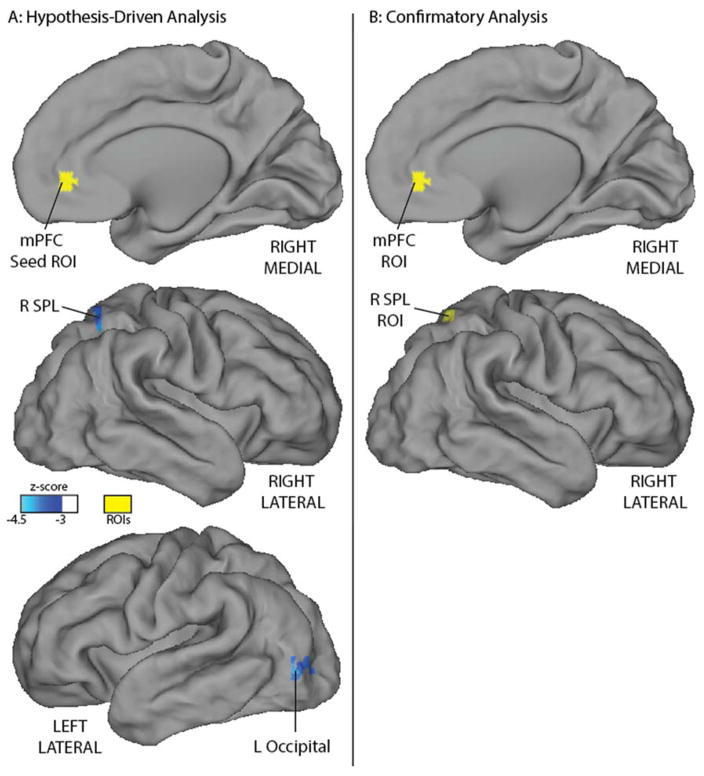Figure 2.
Both hypothesis-driven and confirmatory analyses indicate that neonatal resting state functional connectivity of a default mode network seed is related to behavioral inhibition at age 2 years. Panel A depicts a whole-brain regression relating functional connectivity soon after birth birth between a medial prefrontal cortex region-of-interest (in yellow) and the rest of the brain to behavioral inhibition at age 2 years, controlling for the same covariates and including the same multiple comparison correction as in Figure 1. Panel B depicts the region pair from the confirmatory analysis that had the second highest effect size relating functional connectivity near birth to behavioral inhibition at age 2 years, with the same covariates. Both the hypothesis-driven and confirmatory analysis identified a connection between the medial prefrontal cortex and right superior parietal lobule that is related to age 2 behavioral inhibition. The hypothesis-driven analysis additionally identified a significant relation between behavioral inhibition and resting state connectivity between the medial prefrontal cortex and left lateral occipital cortex. mPFC: medial prefrontal cortex; R SPL: right superior parietal lobule; ROI: region-of-interest.

